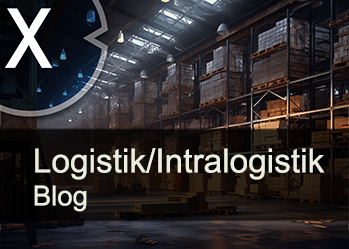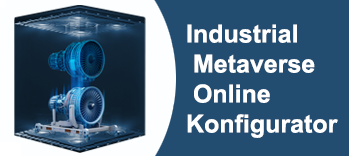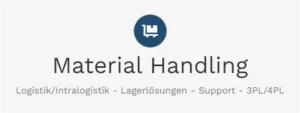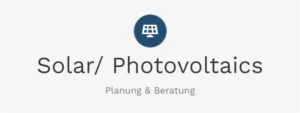Container boom: The development of Lower Saxony's seaports in the first half of 2025 – A comprehensive overview
Xpert pre-release
Language selection 📢
Published on: August 16, 2025 / Updated on: August 16, 2025 – Author: Konrad Wolfenstein

Container boom: The development of Lower Saxony's seaports in the first half of 2025 – A comprehensive overview – Creative image: Xpert.Digital
Job miracle through container logistics in the north: How the ports secure tens of thousands of jobs and billions in revenue
### Sensation on the coast: Why container traffic is exploding in Lower Saxony's ports ### On course for record figures despite the crisis: These figures from Lower Saxony's ports surprise everyone ### Germany's new energy center: How the northern ports are driving the energy transition ### The sleeping giant has awakened: Why the port in Wilhelmshaven is now overtaking everyone ### Container boom and green energy: This is what lies behind the success of the North Sea ports ###
General development of the port industry
What characterizes the throughput development in Lower Saxony's seaports in the first half of 2025?
Lower Saxony's nine seaports continued their positive development in the first half of 2025, recording significant growth despite a persistently challenging market environment. Total throughput volume increased by 4 percent to 27.7 million tons in maritime transport, compared to 26.7 million tons in the first half of 2024. This development continues the positive trend already observed in 2024 as a whole, when throughput increased by 10 percent to 55.5 million tons compared to the previous year.
This growth is particularly remarkable considering that it is taking place against a backdrop of ongoing geopolitical tensions, economic uncertainty, and structural challenges facing the German economy. Inke Onnen-Lübben, Managing Director of the marketing company Seaports of Niedersachsen, emphasized that a "very positive result" was achieved in a "still very challenging market environment."
Which ports belong to the Lower Saxony port group and what are their regional focuses?
The port group comprises a total of nine seaports: Brake, Cuxhaven, Emden, Leer, Nordenham, Oldenburg, Papenburg, Stade, and Wilhelmshaven. These ports are strategically positioned along the Lower Saxony coast and the tributaries to the North Sea and cover a wide range of transshipment activities. Wilhelmshaven, as Germany's only deep-water port, occupies a special position, while Emden has a traditionally strong presence in automotive transshipment and wind energy.
The geographical distribution allows the port group to serve various market segments, benefiting from both direct maritime traffic and connections to the hinterland via inland waterways. Cuxhaven is conveniently located at the crossroads of maritime traffic on the North Sea and Baltic Sea and has established itself as a major RoRo port, while Stade plays a key role in energy supply through its LNG infrastructure.
Container transport as a growth driver
How has container handling developed in the ports of Lower Saxony?
Container traffic was the absolute growth driver in the first half of 2025. At 664,685 standard containers (TEU), the volume more than doubled compared to the first half of 2024, representing an increase of 122 percent. This spectacular development exceeds even the already positive expectations and demonstrates the growing importance of Lower Saxony's ports as container transshipment hubs.
This development is particularly remarkable given that container throughput had been significantly weaker in previous years. In 2023, for example, it was 531,637 TEU, a decline of 22 percent compared to the previous year. The current development thus represents a clear turnaround and underscores the successful strategic measures implemented by the port operators.
What factors contributed to the strong growth in container throughput?
The exceptional growth in the container sector is largely due to strategic alliances within the shipping industry. The "Gemini Cooperation" between the shipping companies Maersk and Hapag-Lloyd, announced in 2024, has already shown significant positive effects. This new alliance, which officially launched in February 2025, envisions Wilhelmshaven and other northern German ports as key transshipment hubs in a new network.
The cooperation consists of 26 liner services in seven shipping areas with corresponding hubs. Wilhelmshaven will be integrated into services between Europe and Asia, as well as Northern Europe and North America, and will benefit from this merger as one of the future northern hubs. The announcement of this alliance had already boosted container traffic in 2024 and is now driving impressive growth figures in the first half of 2025.
How is the JadeWeserPort in Wilhelmshaven developing as a container terminal?
The JadeWeserPort in Wilhelmshaven recorded approximately 665,000 standard containers in the first half of 2025, double the previous year's volume. This development is particularly remarkable, as the port had operated significantly below capacity in previous years. In 2024, a total of 843,000 TEU were handled, representing an increase of almost 60 percent over the previous year.
Germany's only deep-water port is designed for an annual throughput of 2.7 million standard containers, which still offers considerable growth potential. The infrastructure has been continuously modernized: EUROGATE, as the terminal operator, has invested more than €100 million in the site over the past two years, including raising existing container gantry cranes and commissioning two new ones.
With its 18-meter-deep fairway and tide-independent accessibility for large container ships with a draft of up to 16.5 meters, as well as a turning circle of 700 meters in diameter, the port offers significant nautical advantages over other ports in the German Bight. This infrastructure enables it to handle even the world's largest container ships with a capacity of more than 24,000 TEU.
Development in various goods segments
How have the various general cargo categories developed?
Non-containerized general cargo throughput also showed positive development, increasing by 11 percent to 3.7 million tons. Growth drivers were primarily project cargoes from the wind energy sector and iron and steel products. This development reflects the growing importance of the energy transition and the associated infrastructure projects.
Particularly noteworthy is the handling of project cargo, which benefits from increased activity in the wind energy sector. Lower Saxony's ports have established themselves as important logistics hubs for the installation and maintenance of wind turbines, both for onshore and offshore projects. The handling of iron and steel products also demonstrates the continued importance of traditional industries and their interrelationships with the port economy.
What role does vehicle handling play in the port industry?
Vehicle handling also developed positively, increasing by 3 percent to approximately 845,000 units, albeit more moderately than other segments. This development is remarkable given the structural shift in the automotive industry toward electromobility and demonstrates that the ports of Lower Saxony continue to play an important role as automotive ports.
Emden remains traditionally the most important location for automotive handling, where the Volkswagen plant generates a significant portion of handling activity. However, other ports such as Wilhelmshaven are also experiencing positive developments: around 36,200 vehicles were handled there in 2023, compared to 9,000 in 2022. This development demonstrates the potential for further diversification of vehicle handling across multiple locations.
Your container high-bay warehouse and container terminal experts

Container high-bay warehouses and container terminals: The logistical interplay – Expert advice and solutions – Creative image: Xpert.Digital
This innovative technology promises to fundamentally change container logistics. Instead of stacking containers horizontally as before, they are stored vertically in multi-tiered steel rack structures. This not only enables a drastic increase in storage capacity within the same space but also revolutionizes the entire processes in the container terminal.
More about it here:
Energy transition in the port: winners, losers and the new logistics
Bulk cargo handling and energy transition
How did bulk goods develop in the first half of 2025?
Bulk goods saw varied developments depending on the category. Solid bulk goods increased by 8 percent to 6.4 million tons, while liquid bulk goods decreased by 21 percent to 11.7 million tons. This differentiated development reflects structural changes in the energy industry and the associated goods flows.
The increase in solid bulk cargo is partly due to increased handling volumes of building materials and other raw materials needed for infrastructure projects. Coal handling also increased by 32 percent in Wilhelmshaven, indicating changes in trade flows and energy supply strategies. At the same time, the decline in liquid bulk cargo reflects the effects of the energy transition and the gradual move away from fossil fuels.
What impact does the energy transition have on port development?
The energy transition has established itself as one of the most important drivers of port development. Lower Saxony's ports play a key role as energy hubs and have expanded their infrastructure accordingly. In Wilhelmshaven and Stade, liquefied gas piers were built at record speed. These will initially be used for LNG but are future-proofed for green gases such as hydrogen.
Crude oil throughput in Wilhelmshaven fell by 28 percent in the first half of 2025, reflecting the structural shift toward alternative energy sources. At the same time, the ports' importance for handling wind turbines and other renewable energy components is growing. Emden has already established itself as a key port for wind energy components, handling more than 5,000 large components for wind turbines annually.
Challenges and problem areas
What impact does the closure of the Hunte Bridge have on the port economy?
The closure of the Hunte Bridge near Elsfleth poses a significant challenge for several ports in Lower Saxony. Oldenburg has been cut off from maritime traffic since February 2024, and the ports of Brake and Nordenham are also affected. The problem arose from two shipping accidents within a few months, in which first the original bridge and later also the temporary bridge were damaged.
The impact is significant: The ports of Brake, Oldenburg, and Nordenham face millions in lost revenue due to their cutoff from rail traffic. This is particularly critical for Brake, where export goods are primarily delivered by rail. The closure had negative repercussions for all cargo sectors, as logistics chains were significantly disrupted.
According to Deutsche Bahn, the new bridge construction is scheduled to be completed by early 2028 at the latest. This long timeframe places a sustained burden on the affected ports and demonstrates the vulnerability of the port industry to infrastructure failures. While all other Lower Saxony seaports increased their throughput, these three locations experienced declines.
How does the geopolitical environment influence port development?
The geopolitical environment remains a significant challenge for Lower Saxony's port industry. The ongoing effects of the war in Ukraine, geopolitical tensions, and uncertainty about further trade conflicts are significantly impacting the flow of goods. The impact is particularly noticeable in the agricultural sector, where goods are often transported by rail instead of by ship, changing traditional handling patterns.
According to port officials, developments in the second half of 2025 remain uncertain and depend heavily on the economic and geopolitical situation. The structural challenges facing the German economy affect seaports equally, even though they have so far defied the trend of declining economic growth.
At the same time, structural change is also opening up new opportunities, particularly in the areas of energy security and energy supply diversification. The rapid implementation of LNG terminals has demonstrated that Lower Saxony's ports are capable of responding flexibly to changing geopolitical conditions and making important contributions to national energy security.
Site-specific developments
Which ports recorded the strongest growth in the first half of 2025?
The largest increases were recorded in Cuxhaven with an increase of 61 percent, followed by Brake with 13 percent, and Emden with 12 percent. These different growth rates reflect the respective specializations and market conditions of the individual ports. Cuxhaven benefited particularly strongly from developments in the offshore wind energy sector and RoRo traffic.
Despite the impact of the Hunte Bridge closure, Brake still achieved significant growth of 13 percent to almost 2.8 million tons. This growth was driven by higher throughput volumes for agricultural products and strong growth in the general cargo sector, particularly forest products and the handling of iron and steel. This demonstrates the port's resilience and its ability to grow despite infrastructure challenges.
Emden continued its positive trend, benefiting from its strong position in wind energy logistics and automotive handling. The port has established itself as one of the most important service ports for offshore wind farms on the North Sea coast, transporting personnel and materials to the facilities in the German Bight.
How is Cuxhaven developing as an offshore wind energy location?
Cuxhaven has developed into one of Germany's most important locations for offshore wind energy. The port boasts a high-performance infrastructure, including its offshore base, that particularly meets the needs of offshore wind energy. In addition to the existing Offshore Terminal 1, Offshore Terminal 2 was built, from where offshore wind turbines are regularly shipped to their deployment locations all over the world.
Cuxhaven's importance for wind energy is further strengthened by ongoing expansion. Work on the expansion of the German Offshore Industry Center began in February 2025 with the first pile-driving for berths 5-7. The new berths will create 1,257 meters of quayside and 38 hectares of terminal space, primarily for the handling of wind energy components.
These investments of €284 million for the years 2007 to 2024 represent the largest single item in NPorts' investments and underscore the strategic importance of wind energy for Lower Saxony's port industry. What's special about the current expansion is that, for the first time, the federal government, the state government, and private companies are jointly financing the port infrastructure, underscoring the project's supra-regional significance.
What role does Wilhelmshaven play as an energy port?
Wilhelmshaven has established itself as Germany's central energy port and is currently undergoing profound structural change. As an energy hub, the port has been one of the most important locations for Germany's energy industry for over 60 years and is Germany's most important hub for coal, electricity, natural gas, and oil. Total throughput remained stable at 16.7 million tons in the first half of 2025, although the composition changed significantly.
Crude oil throughput declined by 28 percent, while coal throughput increased by 32 percent. This shift reflects changing energy supply strategies and the impact of geopolitical developments. At the same time, the port's importance as an LNG import location is growing: The first floating LNG terminal has been in operation since 2022, and a second terminal is planned.
Wilhelmshaven plans to transition from traditional to climate-friendly energy sources in the future. Companies have joined forces at the "ENERGY HUB Port of Wilhelmshaven" to drive this development forward, particularly to import hydrogen and hydrogen derivatives, ship CO2, and implement other energy- and climate-friendly industrial projects locally.
Your container high-bay warehouse and container terminal experts

Container terminal systems for road, rail, and sea in the dual-use logistics concept of heavy-duty logistics – Creative image: Xpert.Digital
In a world characterized by geopolitical upheavals, fragile supply chains, and a new awareness of the vulnerability of critical infrastructure, the concept of national security is undergoing a fundamental reassessment. A state's ability to ensure its economic prosperity, the supply of its population, and its military capability increasingly depends on the resilience of its logistics networks. In this context, the term "dual-use" is evolving from a niche category of export control to a overarching strategic doctrine. This shift is not merely a technical adaptation, but a necessary response to the "turning point" that requires the profound integration of civilian and military capabilities.
Suitable for:
Ports 2025: Opportunities for growth despite geopolitical uncertainty
Investments and infrastructure development
Which investments shape the development of Lower Saxony's ports?
Lower Saxony's ports are currently undergoing a phase of intensive infrastructure development. Niedersachsen Ports (NPorts) expects to invest around €160 million this year and €150 million next year. These investment amounts are significantly higher than the port company's early years, when €2.9 million was invested in 2005, and €117.6 million by 2024.
Combined, the 15 port locations have received over €1.5 billion in development investments over the past 20 years. In addition, this year's maintenance expenditures totaled around €67 million. The port company's revenues have increased from €37.7 million in 2005 to €104.4 million in 2024, underscoring the growing economic importance of the ports.
The largest single investment item is the expansion of the wind energy infrastructure in Cuxhaven, with €284 million for the years 2007 to 2024. The second major investment area is the construction of LNG terminals: Following the €50 million project in Wilhelmshaven, the €300 million terminal in Stade is the largest project in NPorts' history to date.
How do investments in the energy transition affect port capacities?
Investments in the energy transition infrastructure have fundamentally changed the capacities and profiles of Lower Saxony's ports. In Wilhelmshaven and Stade, liquefied natural gas terminals were built at record speed. These terminals are currently used for LNG but are future-proofed for green gases such as hydrogen. These terminals can feed at least five billion cubic meters of natural gas into the grid annually.
In Cuxhaven, the new offshore terminals will create significant additional capacity for handling wind energy components. The new berths 5-7, with 1,257 meters of quayside and 38 hectares of terminal space, will further strengthen Cuxhaven's position as Germany's leading offshore wind energy port. This infrastructure will enable efficient handling of even the largest wind energy components.
The investments also demonstrate the strategic foresight of the port's planning: The LNG terminals are designed to be "Green Gas Ready," allowing them to be easily converted to hydrogen and other climate-neutral gases in the future. This ensures the long-term relevance of the investments, even after the planned phase-out of fossil fuels.
Jobs and economic importance
What are the employment effects of Lower Saxony’s seaports?
Lower Saxony's seaports have become a significant source of employment. In 2023, a total of 74,437 people in Lower Saxony were directly or indirectly dependent on the seaports for their jobs, an increase of around 3,000 employees compared to 2020. In the coastal port regions alone, the ports secure 49,369 jobs, representing an increase of 1,995 jobs since 2020.
The regional distribution reflects the different priorities of the individual port locations: Emden has the most port-dependent employees, with 9,367, followed by Wilhelmshaven with 9,250. Papenburg follows with 6,254 employees and Stade with 4,563. The smaller ports of Cuxhaven (3,225), Brake (2,565), Oldenburg (2,404), Nordenham (1,872), and Leer (869) also contribute significantly to regional employment.
Particularly noteworthy is the development in Wilhelmshaven, which recorded the strongest growth of all port locations from 2020 to 2023: The number of port-dependent employees increased by around 1,600, corresponding to more than 20 percent. These new jobs were created in container logistics, with service providers, and in connection with the LNG terminal.
What economic importance do the ports have for Lower Saxony?
The economic importance of Lower Saxony's ports is considerable and continuously growing. Port-dependent jobs generate gross value added of €5.885 billion and generate €783 million in tax revenue for the state of Lower Saxony. These figures underscore the role of ports as indispensable lifelines for security of supply and as central pillars of economic resilience.
Lower Saxony's Minister of Economic Affairs, Olaf Lies, emphasizes: "Our seaports are far more than transshipment points – they are indispensable lifelines for our country's security of supply. They secure jobs, create added value, and strengthen our independence through the handling of goods and commodities, as well as increasingly through their contribution to our energy supply."
The added value of the ports extends far beyond the immediate port regions. A wide range of industrial and service sectors, located in all regions and economic sectors of Lower Saxony, benefit from the ports. The ports function as important trade hubs and significant business locations, whose capacity is crucial for the growth of the foreign trade-oriented German economy.
Lower Saxony's Ports 2025: Between Investment Boom and Geopolitical Uncertainty
What development trends are emerging for the second half of 2025?
According to port officials, developments in the second half of 2025 remain uncertain and depend heavily on various external factors. Inke Onnen-Lübben, Managing Director of Seaports of Lower Saxony, emphasized that further developments depend, among other things, on the economic and geopolitical situation. The structural challenges facing the German economy and potential trade conflicts are difficult to predict and could impact the positive development.
Nevertheless, optimistic signs are emerging: Investments by the port industry indicate that the industry remains optimistic about the future. The new Gemini cooperation between Hapag-Lloyd and Maersk, which launched in February 2025, promises further positive momentum for container handling, especially in Wilhelmshaven and other northern German ports.
Future growth potential exists particularly in the energy transition, as well as in project logistics and the further expansion of container handling. The ports are strategically well positioned to benefit from the megatrends of energy transition, digitalization, and changing global supply chains. The investments already made in future-proof infrastructure create the conditions for further sustainable growth.
What are the long-term development prospects for Lower Saxony’s ports?
The long-term prospects of Lower Saxony's ports are closely linked to the transformation of the German economy toward climate neutrality. The Port of Lower Saxony is to become a central hub for renewable energies, with Wilhelmshaven and Stade becoming hubs for renewably produced gases and hydrogen. This transformation requires significant investments in new infrastructure and technologies.
The perspective paper "The Port of Lower Saxony 2025" focuses primarily on climate protection and digitalization as topics that will massively influence the future development of ports. Ports must address the question of how a supply of alternative fuels can be ensured and what infrastructure is required for this.
Wilhelmshaven has exceptional development potential due to its unique characteristics as a deep-water port. Forecasts predict a total throughput volume of approximately 83 million tons by 2030, based on the current figure of approximately 35 million tons. This increase would correspond to an annual growth rate of approximately 8 percent and would be driven by the utilization of the JadeWeserPort container terminal and new handling activities in the field of green energy sources.
The challenge lies in successfully managing the transformation without losing existing strengths. Lower Saxony's ports must maintain their role as universal service providers and logistics interfaces for international freight transport, while simultaneously becoming pioneers of the energy transition. This requires not only investments in hardware, but also in know-how, training, and international cooperation.
The successful management of this transformation will determine whether the ports of Lower Saxony can continue to act as guarantors of added value, prosperity and jobs in the future and whether they will maintain their position as indispensable infrastructures for the German and European economy.
Advice – planning – implementation
I would be happy to serve as your personal advisor.
Head of Business Development
Advice – planning – implementation
I would be happy to serve as your personal advisor.
contact me under Wolfenstein ∂ Xpert.digital
call me under +49 89 674 804 (Munich)























